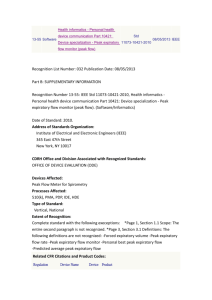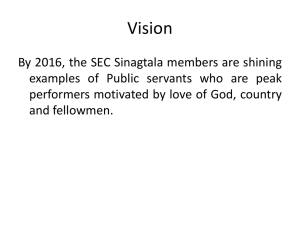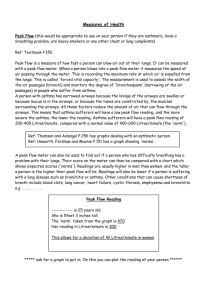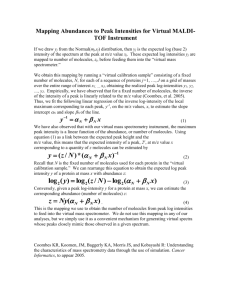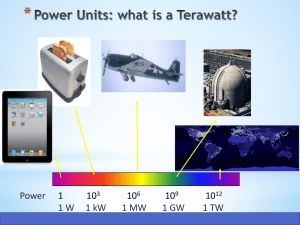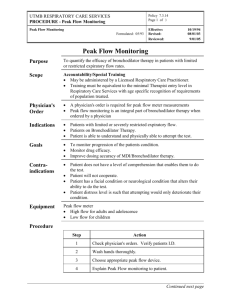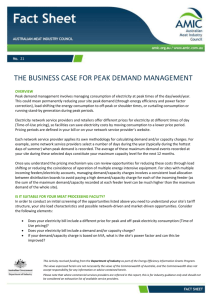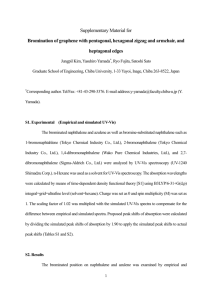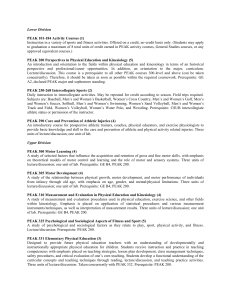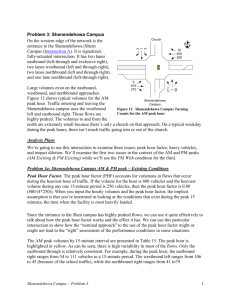word - In the Zone
advertisement
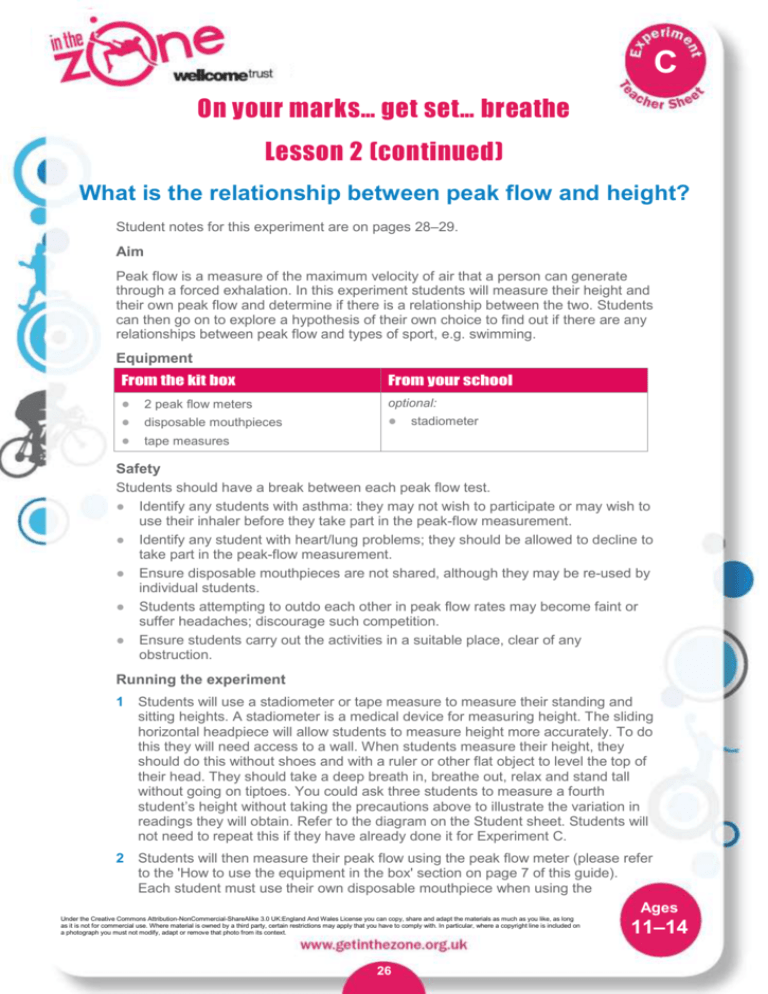
C On your marks… get set… breathe Lesson 2 (continued) What is the relationship between peak flow and height? Student notes for this experiment are on pages 28–29. Aim Peak flow is a measure of the maximum velocity of air that a person can generate through a forced exhalation. In this experiment students will measure their height and their own peak flow and determine if there is a relationship between the two. Students can then go on to explore a hypothesis of their own choice to find out if there are any relationships between peak flow and types of sport, e.g. swimming. Equipment From the kit box From your school ● ● ● 2 peak flow meters optional: disposable mouthpieces ● stadiometer tape measures Safety Students should have a break between each peak flow test. ● Identify any students with asthma: they may not wish to participate or may wish to use their inhaler before they take part in the peak-flow measurement. ● Identify any student with heart/lung problems; they should be allowed to decline to take part in the peak-flow measurement. ● Ensure disposable mouthpieces are not shared, although they may be re-used by individual students. ● Students attempting to outdo each other in peak flow rates may become faint or suffer headaches; discourage such competition. ● Ensure students carry out the activities in a suitable place, clear of any obstruction. Running the experiment 1 Students will use a stadiometer or tape measure to measure their standing and sitting heights. A stadiometer is a medical device for measuring height. The sliding horizontal headpiece will allow students to measure height more accurately. To do this they will need access to a wall. When students measure their height, they should do this without shoes and with a ruler or other flat object to level the top of their head. They should take a deep breath in, breathe out, relax and stand tall without going on tiptoes. You could ask three students to measure a fourth student’s height without taking the precautions above to illustrate the variation in readings they will obtain. Refer to the diagram on the Student sheet. Students will not need to repeat this if they have already done it for Experiment C. 2 Students will then measure their peak flow using the peak flow meter (please refer to the 'How to use the equipment in the box' section on page 7 of this guide). Each student must use their own disposable mouthpiece when using the Ages Under the Creative Commons Attribution-NonCommercial-ShareAlike 3.0 UK:England And Wales License you can copy, share and adapt the materials as much as you like, as long as it is not for commercial use. Where material is owned by a third party, certain restrictions may apply that you have to comply with. In particular, where a copyright line is included on a photograph you must not modify, adapt or remove that photo from its context. 26 11–14 C peak flow meter. Students must throw their mouthpiece away at the end of the experiment. 3 When students are taking their peak flow readings the following important instructions must be followed: ● ● ● ● The pointer on the peak flow meter should be set to the end of the meter (below the 60 mark) before students blow into it. Students must stand up. Students should hold the peak flow meter so that their fingers are clear of the scale and slot. They should hold the meter horizontally when blowing into it. 4 See the Student sheet on pages 28–29 for the protocol for obtaining evidence. 5 Students take three readings and take the highest value. 6 Students can then write their results on the whiteboard or a record sheet. Expected results Peak flow in this age group will be mainly dependent upon height. The peak flow of taller students is likely to be greater than those of other students. Peak flow is also likely to be higher in those who take part in regular exercise. Students with asthma are likely to have a lower peak flow and may be used to measuring their peak flow. In adults peak flow varies with height, age and sex. Live Data Zone Your students can enter their peak flow and heights from this experiment, together with data from Experiment D, into the ‘Live Data Zone’ section of the In the Zone website (www.getinthezone.org.uk). See Teacher notes on page 35 for 11–14 Lesson 3. Ages 11–14 27

